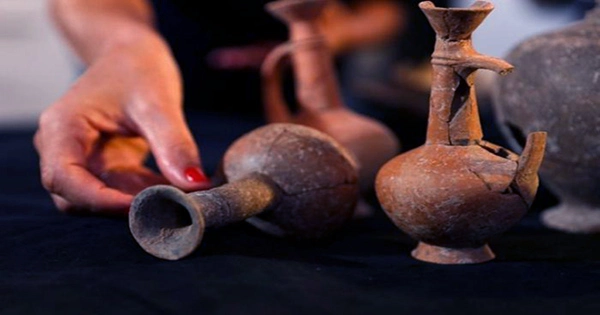The oldest proof of opium use was discovered in an ancient Israelite burial site. The discovery not only provides new information on the bizarre funeral practices of the Bronze Age but also sheds light on the shadowy opium trade that existed in the Levant in the 14th century BCE.
The find was made in 2012 at the Tel Yehud site in Israel by archaeologists from the Israel Antiquities Authority (IAA), who discovered ancient items among a number of 3,400-year-old Canaanite burials. Animal bones and many rare Cyprus-made pots called Base-Ring juglets were also discovered.
They were once thought to be ritual vessels for opium, which is derived from the opium poppy plant, due to their upside-down poppy-like design (Papaver somniferum). But this has never been demonstrated before.
The material discovered inside the containers was chemically analyzed in a recent study by scientists from the IAA, Tel Aviv University, and the Weizmann Institute of Science.
In line with their expectations, the residue contained evidence of a variety of substances identified in P. somniferum, including morphinan, a group of naturally occurring molecules that includes substances like morphine and codeine.
In a statement provided to IFLScience, Vanessa Linares, the lead study author from Tel Aviv University, said that this was the only psychotropic substance discovered in the Levant during the Late Bronze Age.
By today’s standards, burying someone with drugs might seem a little weird, but numerous archeological investigations have revealed how narcotics have played a significant role in funerary ceremonies throughout history.
Of course, Linares remarked, “We do not know what the opium’s role in the ceremony was, whether the Canaanites in Yehud thought that the dead would need opium in the afterlife, or whether it was the priests who used the drug for the ceremonial.
Dr. Ron Be’eri from the Israel Antiquities Authority continued, “It appears from documents found in the Ancient Near East that the Canaanites attached great importance to satisfying the needs of the dead’ through ritual ceremonies performed for them by the living, and believed that in return, the spirits would ensure the health and safety of their living relatives.
It is evident that the drug users went to considerable lengths to obtain this powerful narcotic by tracking the origins of the ceramics and poppies.
The Mediterranean island of Cyprus is where many of the pots were made. Native to the eastern Mediterranean, opium poppies were probably grown in what is now Turkey. This implies that the drug had to travel quite a distance to get to the Levant.
In other words, the opium was transported to Yehud from Turkey via Cyprus; this naturally demonstrates the value placed on the substance, according to Linares.
















